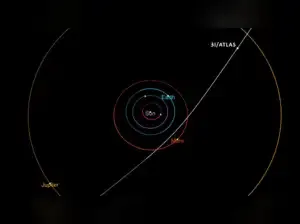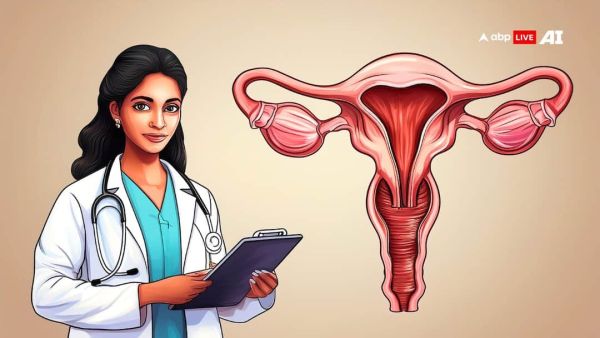3I/ATLAS update: Harvard astrophysicist Dr. Avi Loeb might have been right all along about 3I/ATLAS, the mysterious interstellar object that has captured global attention. In a recent update surrounding 3I/ATLAS, US Congresswoman Anna Paulina Luna revealed that NASA has ‘noted’ Loeb’s early observations of the comet’s “abnormal tail.” Luna, who had earlier urged NASA to release the unreleased data and images of 3I/ATLAS, said she recently had a “good conversation” with the space agency. During the discussion, NASA officials reportedly revealed when they plan to make the images public.
Also Read: 3I/ATLAS might have just proven Einstein's 1915 theory right before unusually deviating near the Sun, which resurfaces the question: Is it really a comet?
Speaking about Harvard astrophysicist Dr. Avi Loeb, one of the key voices studying 3I/ATLAS, Luna claimed that his early analysis has been validated. “Dr. Avi Loeb was correct in his early analysis of the abnormal tail. NASA has also noted this,” she said.
As per the Air Force veteran, “As soon as the government reopens, they’ll be releasing images and data.” However, NASA has not released any exact dates for 3I/ATLAS images.
The congresswoman had previously addressed a letter to acting NASA administrator Sean Duffy, pushing for transparency. “This information is of great importance to advancing our understanding of interstellar visitors and their interaction with our solar system,” she wrote.
Loeb further noted that the comet lacked a typical cometary tail for part of the observation period and that the anti-tail later transitioned into a normal tail near perihelion in September 2025. His interpretation suggests that this unusual tail behavior could indicate "controlled maneuvering," possibly by an alien spacecraft slowing down, with the anti-tail representing braking thrust.
He described the anti-tail's directional change as a potential technosignature indicating artificial control, which would be a high-impact discovery. Loeb has underscored this tail anomaly as one of the key pieces of evidence supporting the hypothesis that 3I/ATLAS might be an engineered object rather than a natural comet. He also referenced this tail behavior in questioning NASA's handling of relevant observational data, urging transparency for independent verification.
Also Read: 3I/ATLAS might have just proven Einstein's 1915 theory right before unusually deviating near the Sun, which resurfaces the question: Is it really a comet?
Speaking about Harvard astrophysicist Dr. Avi Loeb, one of the key voices studying 3I/ATLAS, Luna claimed that his early analysis has been validated. “Dr. Avi Loeb was correct in his early analysis of the abnormal tail. NASA has also noted this,” she said.
When will nasa release 3I/ATLAS photos
As per the Air Force veteran, “As soon as the government reopens, they’ll be releasing images and data.” However, NASA has not released any exact dates for 3I/ATLAS images.
The congresswoman had previously addressed a letter to acting NASA administrator Sean Duffy, pushing for transparency. “This information is of great importance to advancing our understanding of interstellar visitors and their interaction with our solar system,” she wrote.
Avi Loeb’s prediction on 3i/ATLAS’s tail
Dr. Avi Loeb specifically said about the comet 3I/ATLAS's tail that it displayed an unusual "anti-tail," meaning the dust and gas jet was pointing toward the Sun instead of away from it, which is the opposite of normal comet tails. He highlighted this as a rare and anomalous feature that challenges typical comet behavior.Loeb further noted that the comet lacked a typical cometary tail for part of the observation period and that the anti-tail later transitioned into a normal tail near perihelion in September 2025. His interpretation suggests that this unusual tail behavior could indicate "controlled maneuvering," possibly by an alien spacecraft slowing down, with the anti-tail representing braking thrust.
He described the anti-tail's directional change as a potential technosignature indicating artificial control, which would be a high-impact discovery. Loeb has underscored this tail anomaly as one of the key pieces of evidence supporting the hypothesis that 3I/ATLAS might be an engineered object rather than a natural comet. He also referenced this tail behavior in questioning NASA's handling of relevant observational data, urging transparency for independent verification.





